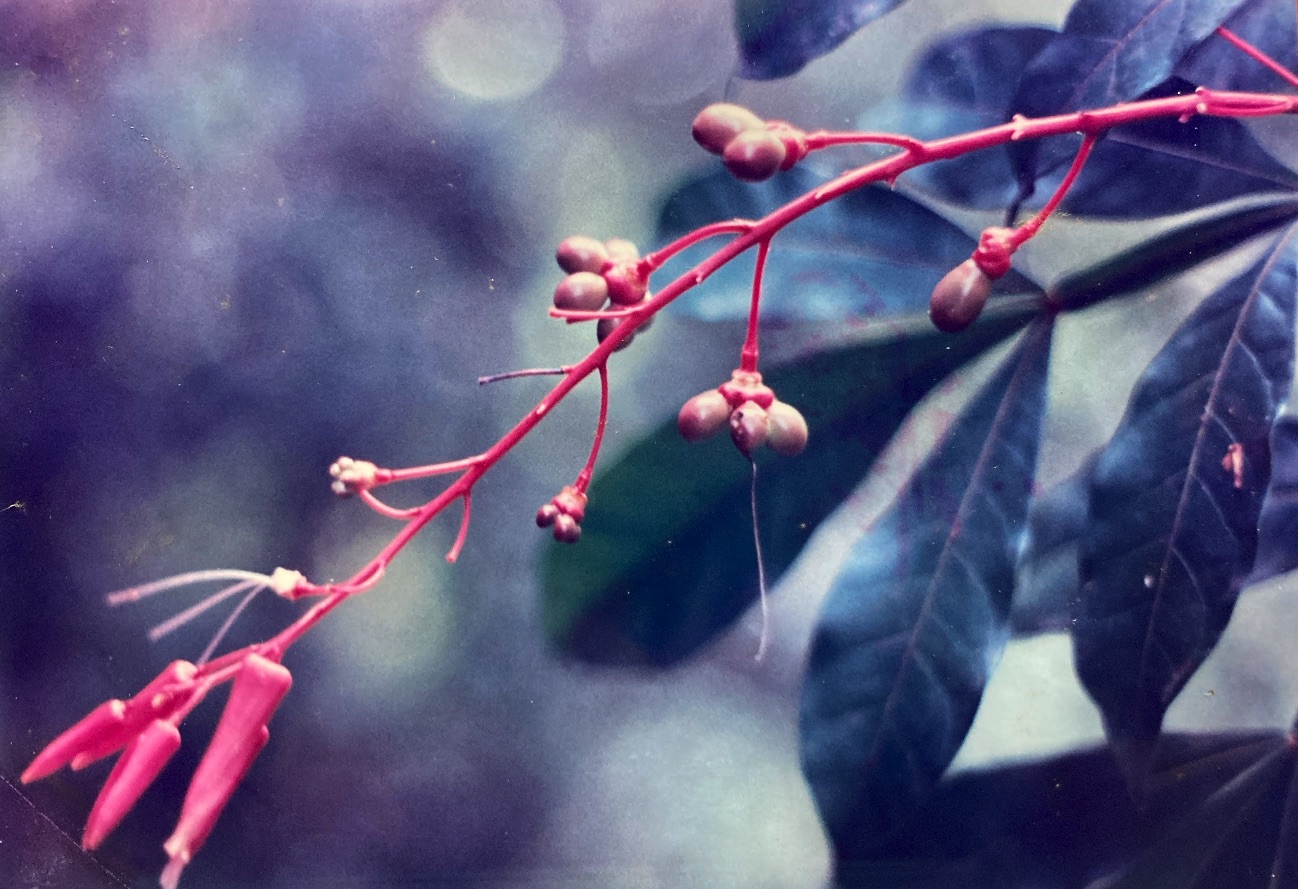Quassia amara L.
Simaroubaceae HOMBRE GRANDE
Occasional evergreen understory tree (2-7 m) preferring the more open, relatively well illuminated, primary (or late secondary) forests. Generally growing in isolation, Hombre Grande is also known to form small stands. The species has several remarkable characteristics that make it an interesting – and easy – tree to identify. Among them are leaves with winged petioles; large, flowing racemes of eye-catching, pink flowers; and ornate, spoked fruits. Hombre Grande enjoys local renown as a medicinal species whose very bitter bark yields an ingredient useful in treating a host of ailments.
Description: Hombre Grande is a small treelet with a trunk that averages only about 4 cm in diameter, though occasional, larger specimens may achieve girths of up to 13 cm. The bole is clad in smooth, gray, and very bitter bark that is traditionally valued for its medicinal properties. Branching occurs along nearly the entire length of the trunk and the horizontal limbs form a narrow, thin and open crown. Hombre Grande leaves are imparipinnately compound and alternate, measuring 28 cm in length by 16 cm in width. Each consists of five leaflets arranged around a broadly-winged petiole – a unique form (vaguely suggestive of a human outline) that makes this tree relatively easy to identify. Ending in small drip-tips, the smooth, entire leaflets are uniform in size (12 cm by 4 cm) and spatulate in shape (narrow and gradually tapering proximally while wide and bulbous distally). New foliage typically has a coppery hue and may appear at any time during the year, but is perhaps most abundantly produced during the mid to late rainy season.
Long, axillary racemes (20 cm) each support about thirty, hanging flowers (5 cm by 0.8 cm). Narrowly conical in shape, these blossoms (5 cm by 0.8 cm) are dominated by long, pink, tube-like corollas. Five, white-tipped, free petals form each corolla and nearly conceal an equal number of white stamens and a single pistil within. Five pink sepals create a star-shaped calyx that resides at the base of the blossom. Occurring annually, flowering periods in Hombre Grande constitute extended – though not highly synchronized – events, with blossoms observable on different but multiple individuals from July through February. A marked flowering peak occurs in October and November of alternate years, when most trees maintain several active racemes. The trees stand outfrom their surroundings during these rare times.
Fruits develop rapidly from the same racemes. As many as five ovoid, glossy, green berries (1.5 cm) grow attached to the expanded and red flower pedestal in a radially symmetrical arrangement that is suggestive of a spoked wheel. Harvests occur as the green berries turn black, during the months from October through March. Each berry contains a single, large seed under a thin layer of juicy pulp.
Similar Species: Hombre Grande is an unmistakable tree, given its original and easily recognizable foliage characteristics and its low stature. The nearly omnipresent fertility exhibited by this species (flowers and/or fruits may be present from July through March) further aids in its precise identification.
Natural History: Hombre Grande flowers are pollinated by butterflies and hummingbirds. Its fruits are eaten by birds and small mammals – Croat (1978) mentions that white-faced monkeys have been observed eating them. The large, swollen axis that supports the berries is colored a bright, scarlet red, and probably serves to attract avian as well as terrestrial seed dispersers.
Uses: Hombre Grande is widely known and traditionally used as a medicinal plant. The bark and wood are soaked in water and the extremely bitter infusion that results is said to be effective against intestinal parasites, fevers, and even diabetes. The concoction may also stimulate the appetite. According to Morley (1978), the alkaloid chemical responsible for Quassia‘s bitter flavor and curative properties is a glucoside, called quassiin. This author also sites the use of Hombre Grande as an ornamental shrub, prized for its attractive red flowers.
Distribution: Hombre Grande is found as a component of open, primary forest. It ranges from southern Mexico to Panama and northern South America.
Photos: Tree Trunk Leaf Flower Flower2 Flower3 Fruit Fruit1 Fruit2 Fruit3




